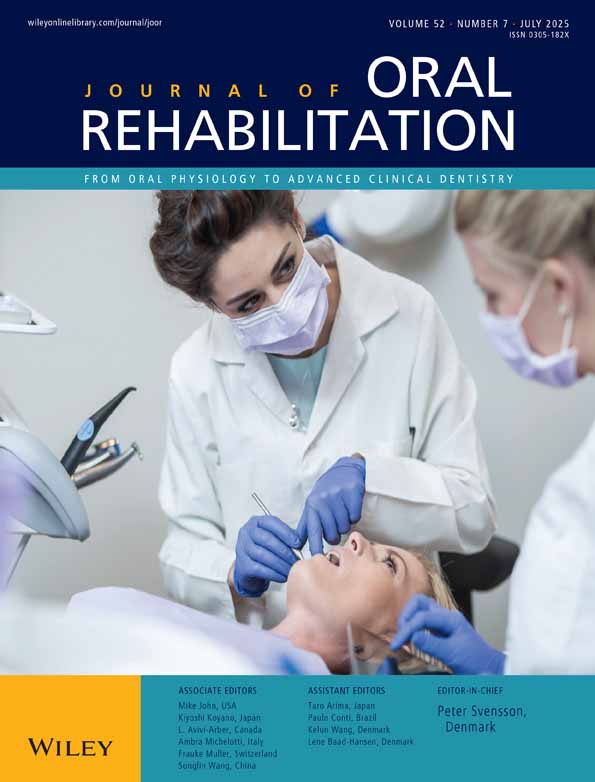Influences of temporomandibular articular mechanoreceptors on functional jaw movements
Summary
Contributions of temporomandibular (TM) articular mechanoreceptors to the control of jaw movement in man were investigated by tracking functional jaw movements. Functional envelopes were recorded by monitoring spatial changes of the lower incisor tooth, before and during unilateral and bilateral anaesthesia of the TM articular capsule. Regional anaesthesia provided reversible blockade of afferent impulse transmission from articular mechanoreceptors, thus reducing their contributory effects on jaw muscle motoneurone pools. Subsequent variations in the size and shape of the envelope of function occurred and were quantified by measuring the area changes. The results suggest that articular mechanoreceptors make a continuous contribution to reflex control of jaw movement.




